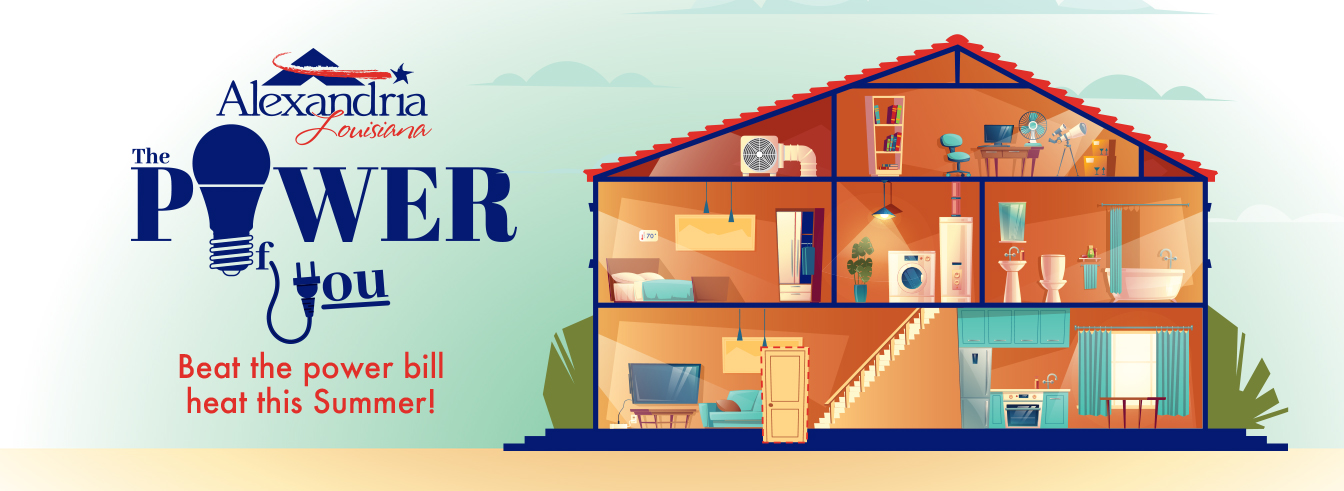The Power of You
The Power of You: Summer Energy Saving Tips
You have the power to save on your utility bill by implementing small changes which can make a big difference. While a total conservation makeover of your home may be costly, making small changes as appliances wear out or bulbs burn out will add up.
ENERGY STAR
ENERGY STAR is a designation by the Environmental Protection Agency for independently certified products designed to deliver the quality, performance and savings today’s consumers expect. When it is time to replace an appliance like a washer, dryer or dishwasher, look for a unit featuring the ENERGY STAR logo. Also check the energy rating stickers on appliances to learn how much energy an appliance would use in a year.
Smart Devices
Smart devices include programmable thermostats, smart switches, and outlets and other items which allow you to set controls on your energy use and to control them remotely in some instances.
Traditional Tools
There are many traditional tools that still make sense to help lower your energy use and save money. Checking air filters and keeping them clean ensures air conditioning units don’t have to work as hard. Turning off lights and fans when you leave a room is easy, and checking around doors and windows for air leaks is important.

1. Air Registers & Filters
Make sure all air registers are clear of furniture so that air can circulate freely. Be certain to change your filter!
2. Lighting
Lighting is one of the easiest places to start saving energy. Since the bulbs themselves can be costly, start by replacing your five most frequently used light fixtures with ENERGY STAR certified LED bulbs. ENERGY STAR LED bulbs use 70-90 percent less energy than traditional incandescent bulbs. They also last 15 times longer and save about $55 in electricity cost over their lifetime. They also produce 70-90 percent less heat, which helps lower cooling costs as well. Always turn off your lights when leaving a room. Turning off just one 60-watt light that would otherwise burn eight hours a day can save you as much as $15 a year on your electric bill.
3. Air Conditioners & Fans
Use a fan to circulate air - it can make the temperature up to 10 degrees cooler. If you use an air conditioner, use an ENERGY STAR qualified model. They use at least 10 percent less energy than standard models.
4. Showers
A 10-minute shower can use less water than a full bath. With a new 2.5 gallon-per-minute (low-flow) showerhead, a 10-minute shower will use about 25 gallons of water, saving you five gallons of water over a typical bath. A new showerhead also will save energy - up to $145 each year on electricity - beating out both the bath and an old-fashioned showerhead.
5. Windows
To keep out the heat of the summer sun, close window shades and drapes in warm weather.
6. Dishwashers
Save water by scraping dishes instead of rinsing them before loading in the dishwasher. Run your dishwasher with a full load and use the air-dry option if available. If you have only a small load, go old school and wash them by hand.
7. Clothes Washer & Dryer
Wash your laundry with full loads and cold water whenever possible. Hot water heating accounts for about 90 percent of the energy your machine uses. Switching to cold water can save the average household approximately $40 annually. You can save up to $75 annually by drying full loads at night to reduce heat and keeping your laundry room door closed. Always clean the lint trap before every load. If you want to save even more, dry your clothes on a clothesline during nice weather.
8. Leaks
Air leaks are a huge source of heat loss. Make sure these specific areas are well insulated:
- The door sweep & around the door
- Attic hatch door
- Insulate pipes
- Fireplace damper
- Floor vents/radiators
- Dryer vent
9. Electronics & Energy Vampires
Consumer electronics play a larger role in your home’s energy consumption, accounting for 15 percent of electricity use. Many consumer electronics, like TV sets, use energy even when switched off. Electronics equipment that has earned the ENERGY STAR certification helps save energy when off. Unplug any battery chargers or power adapters when not in use (like your cell phone charger), or use a power strip with an on/off switch as a central “turn off” point.
10.Thermostat
Install a programmable thermostat to automatically adjust your home’s temperature settings when you’re away or sleeping. When used at energy-saving temperatures, it can save you $150 annually in energy costs.

